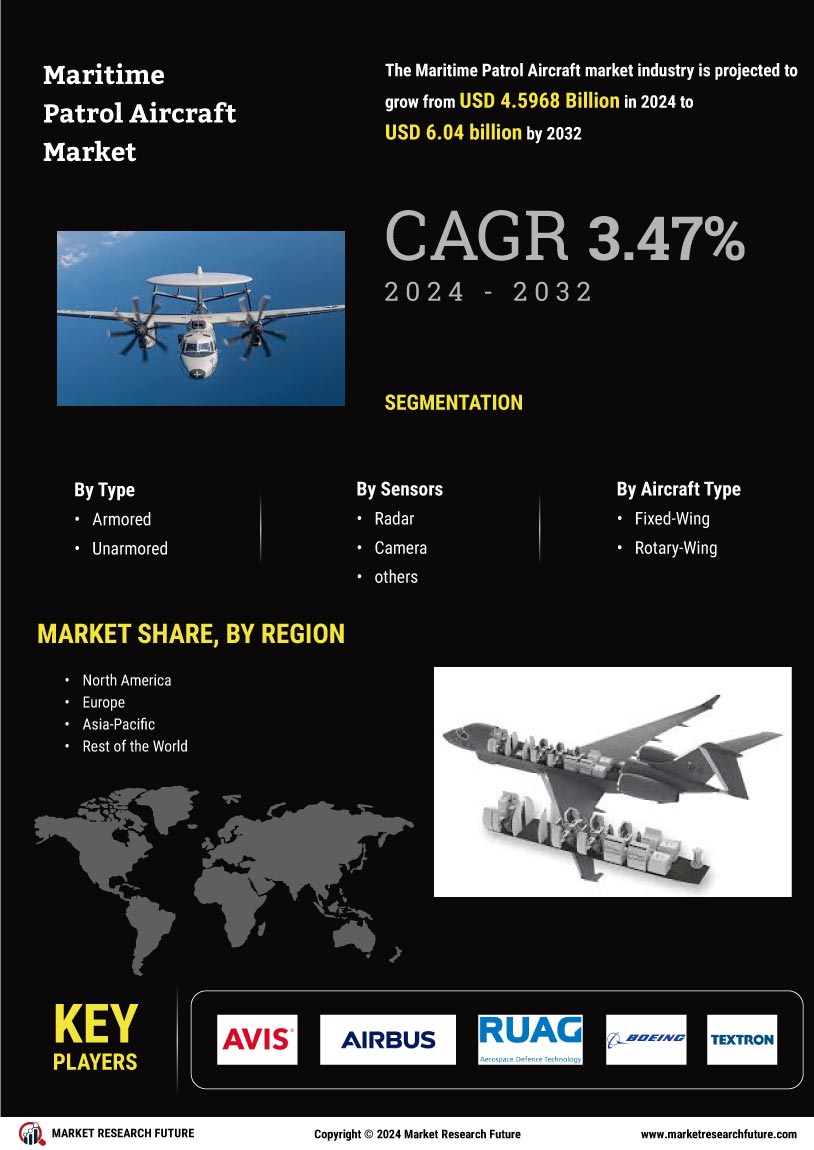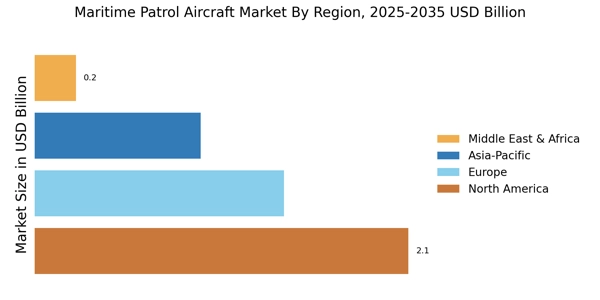The Maritime Patrol Aircraft Market is currently characterized by a dynamic competitive landscape, driven by increasing geopolitical tensions, the need for enhanced maritime security, and advancements in technology. Key players such as Lockheed Martin (US), Boeing (US), and Northrop Grumman (US) are strategically positioned to leverage their technological expertise and extensive experience in defense contracting. Lockheed Martin (US) focuses on innovation in sensor technology and data integration, while Boeing (US) emphasizes partnerships with international defense forces to expand its market reach. Northrop Grumman (US) is investing heavily in unmanned systems, indicating a shift towards automation in maritime surveillance. Collectively, these strategies not only enhance their competitive edge but also shape the market dynamics by fostering a culture of innovation and collaboration among industry players.
In terms of business tactics, companies are increasingly localizing manufacturing to reduce costs and enhance supply chain resilience. This approach appears to be particularly relevant in the context of geopolitical uncertainties, where supply chain disruptions could pose significant risks. The Maritime Patrol Aircraft Market is moderately fragmented, with a mix of established players and emerging companies vying for market share. The collective influence of these key players is substantial, as they drive technological advancements and set industry standards, thereby shaping the overall market structure.
In August 2025, Lockheed Martin (US) announced a partnership with the U.S. Coast Guard to enhance the capabilities of the HC-130J Super Hercules aircraft. This collaboration aims to integrate advanced surveillance technologies, which could significantly improve maritime domain awareness. The strategic importance of this partnership lies in its potential to bolster national security and enhance operational efficiency, thereby positioning Lockheed Martin (US) as a leader in maritime patrol solutions.
In September 2025, Boeing (US) secured a contract with the Royal Australian Air Force to deliver P-8A Poseidon aircraft, which are designed for anti-submarine warfare and intelligence, surveillance, and reconnaissance missions. This contract not only underscores Boeing's commitment to expanding its footprint in the Asia-Pacific region but also highlights the growing demand for advanced maritime patrol capabilities. The strategic implications of this deal suggest that Boeing (US) is well-positioned to capitalize on regional security needs, further solidifying its competitive stance.
In July 2025, Northrop Grumman (US) unveiled its latest unmanned maritime surveillance system, the MQ-4C Triton, which is designed to operate in contested environments. This development reflects a broader trend towards automation and unmanned systems in maritime operations. The introduction of the Triton is likely to enhance Northrop Grumman's (US) market position by addressing the increasing demand for cost-effective and efficient surveillance solutions, thereby aligning with current defense priorities.
As of October 2025, the Maritime Patrol Aircraft Market is witnessing trends such as digitalization, sustainability, and the integration of artificial intelligence. These trends are reshaping competitive dynamics, as companies seek to differentiate themselves through technological innovation rather than price competition. Strategic alliances are becoming increasingly important, as they enable companies to pool resources and expertise to address complex challenges. Looking ahead, competitive differentiation will likely evolve towards a focus on advanced technologies, supply chain reliability, and sustainable practices, indicating a shift in how companies approach market competition.


















Leave a Comment